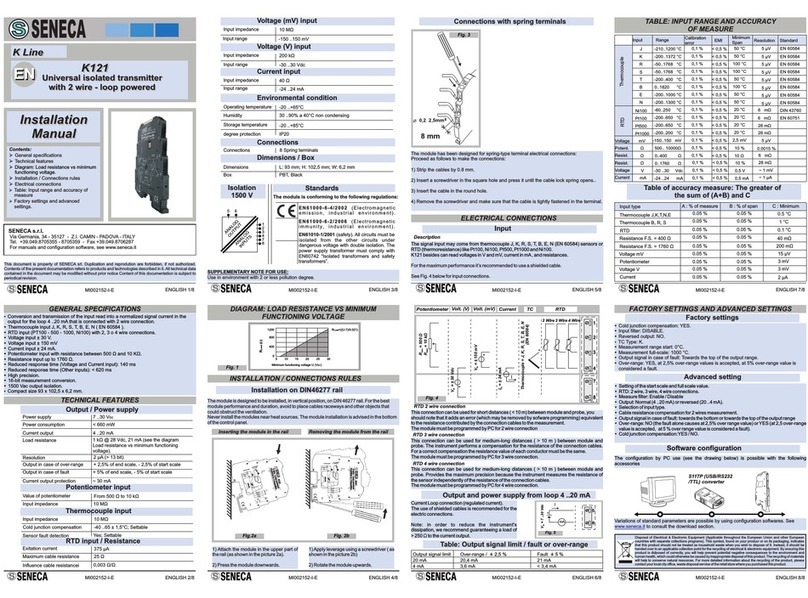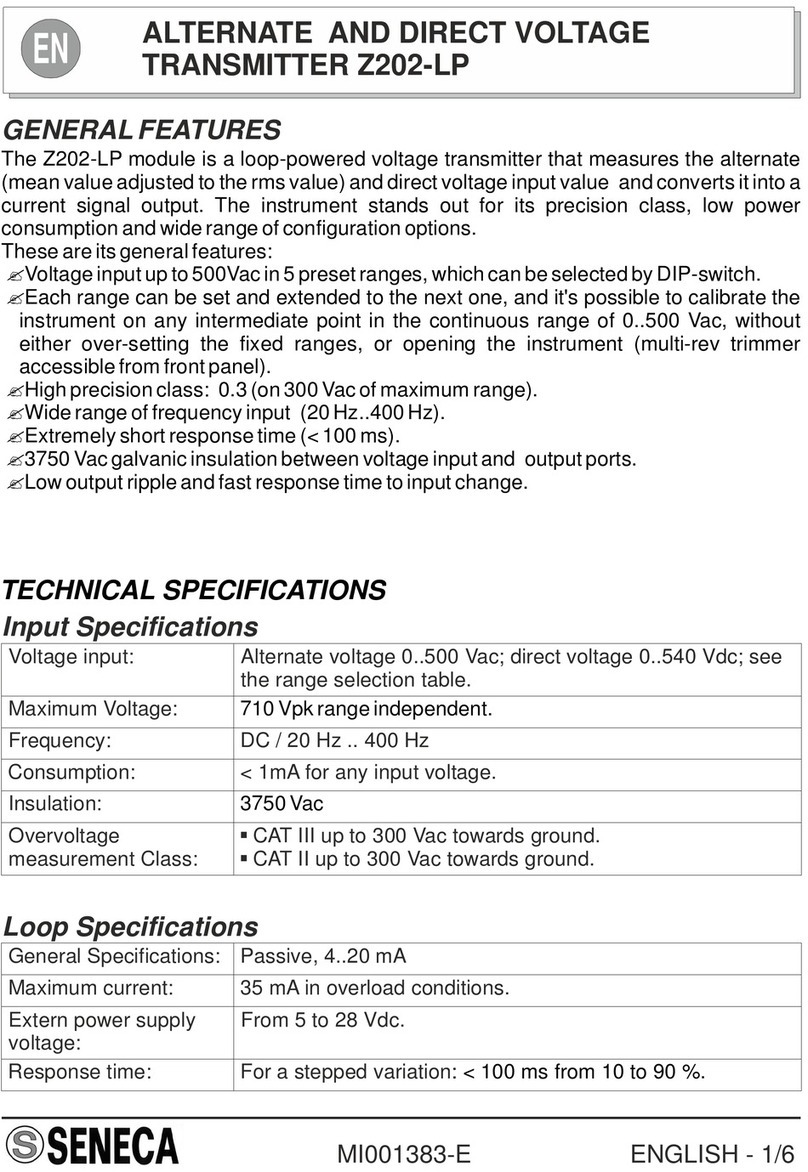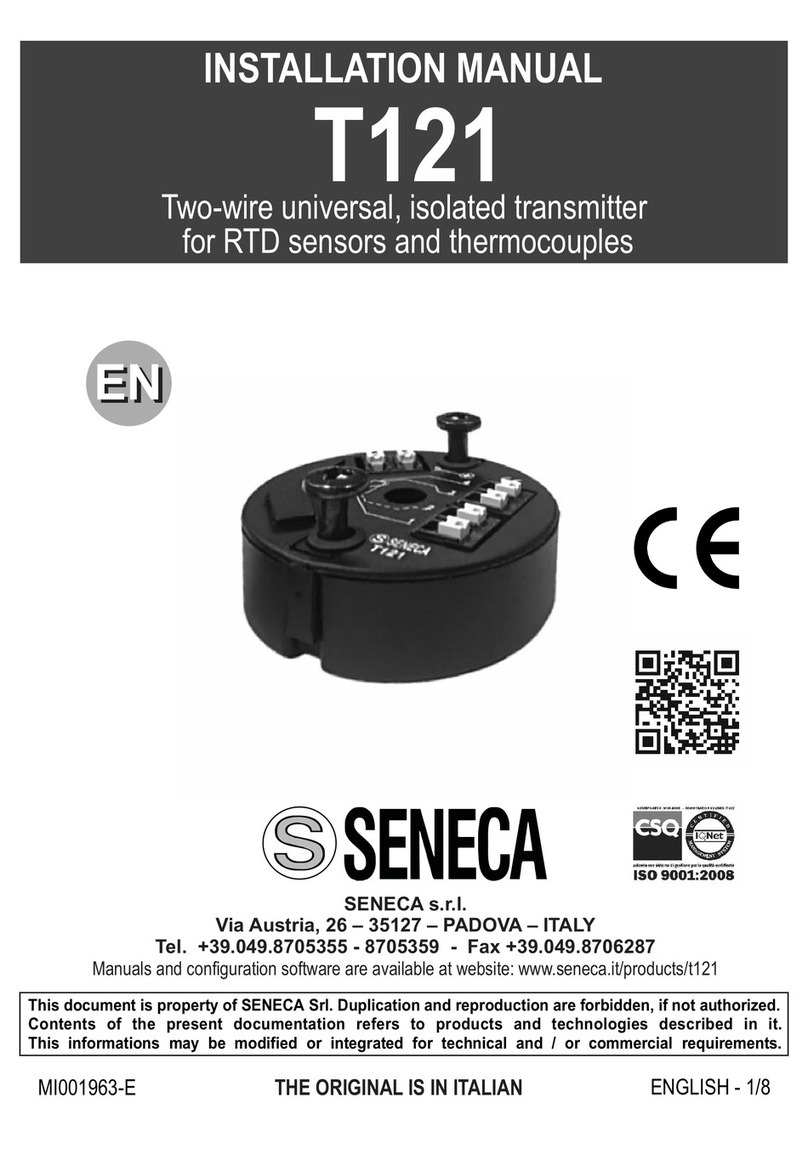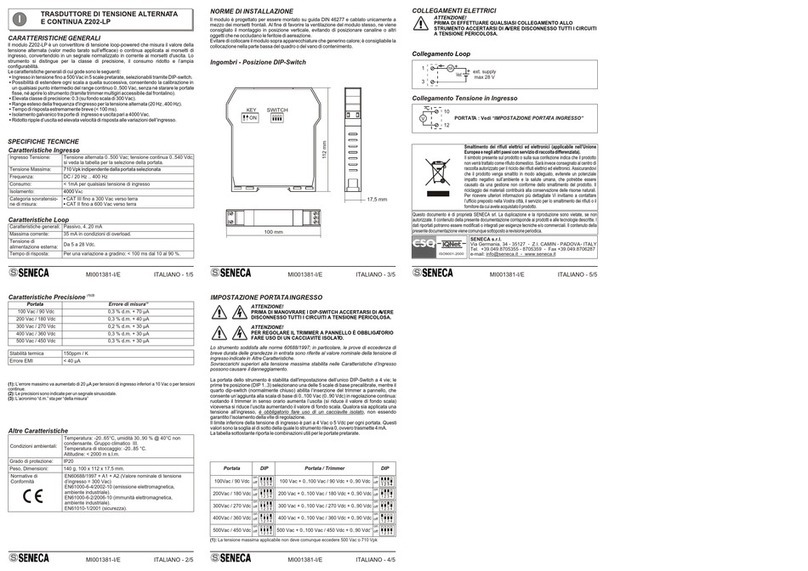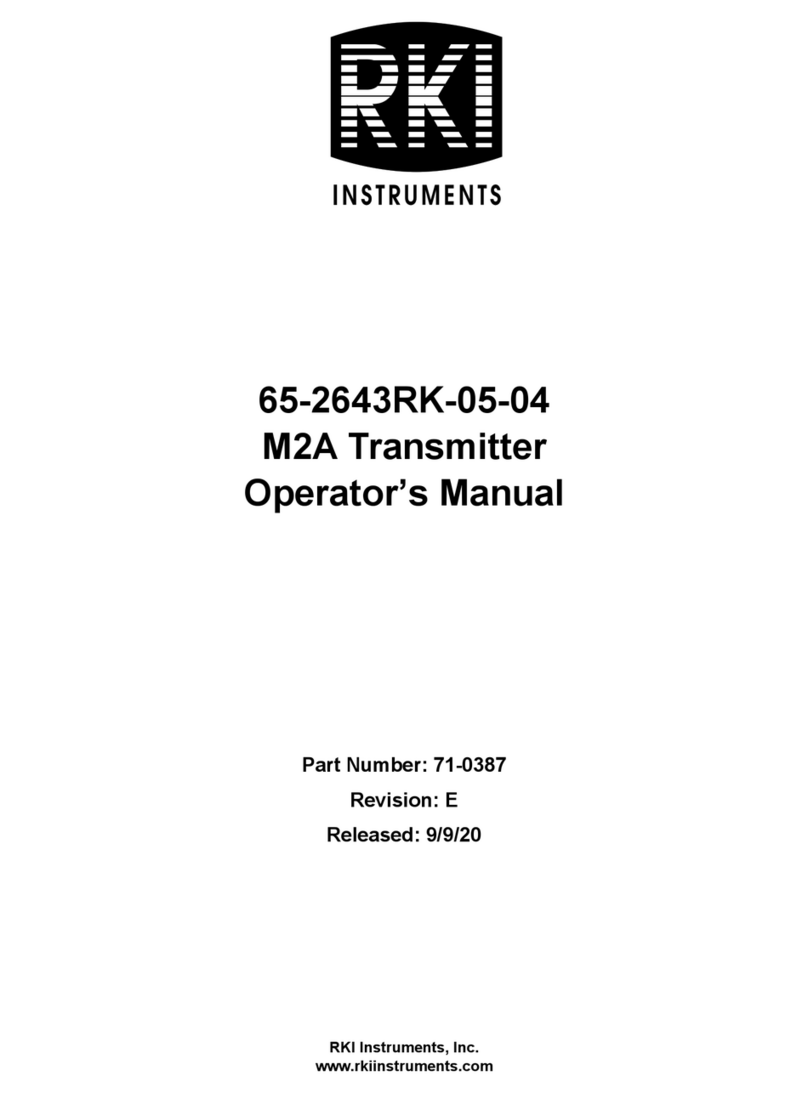
LED indications on the frontal panel
LED Meaning
Rapid flashing
3 pulses/sec.
Internal fault
Slow flashing
1 pulse/sec.
DIP-switch setting error (full scale and start range limits)
Steady light RTD connection wire fault.
Measurement out of range, 3 wire resistance out of range.
rd
Output
Current loop connection (regolated current).
The use of shield cables is recommended for the electronic connections.
Note: in order to reduce the instrument's dissipation, we recommend guaranteeing a load
of > 250 n
Ωto the curre t output.
15
6 2
3
4
OUTPUT
INPUT
+
-
U
Iout
RLoad
MI00124 -E2 ENGLISH - 8/8
Disposal of Electrical & Electronic Equipment (Applicable throughout the European Union and other
European countries with separate collection programs)
This symbol, found on your product or on its packaging, indicates that this product should not be treated as
household waste when you wish to dispose of it. Instead, it should be handed over to an applicable
collection point for the recycling of electrical and electronic equipment. By ensuring this product is
disposed of correctly, you will help prevent potential negative consequences to the environment and
human health, which could otherwise be caused by inappropriate disposal of this product. The recycling of
materials will help to conserve natural resources. For more detailed information about the recycling of this
product, please contact your local city office, waste disposal service or thè retail store where you
purchased this product.
SENECA s.r.l.
Via Austria, 26 - 35127 - PADOVA - ITALY
Tel. +39.049.8705355 - 8705359 - Fax +39.049.8706287
This document is property of SENECA srl. Duplication and reprodution are forbidden, if not authorized. Contents of the
present documentation refers to products and technologies described in it. All technical data contained in the document
may be modified without prior notice Content of this documentation is subject to periodical revision.






